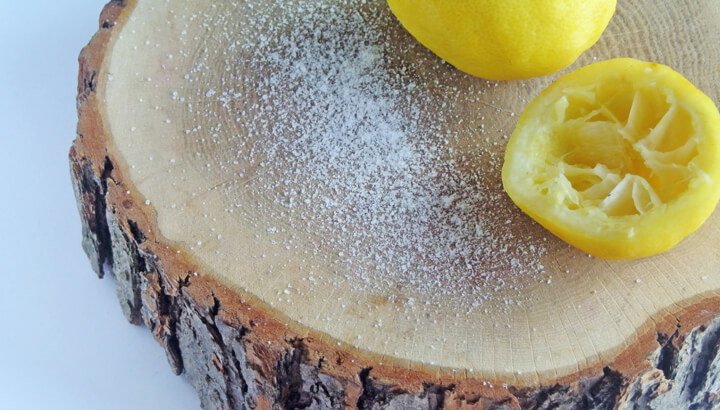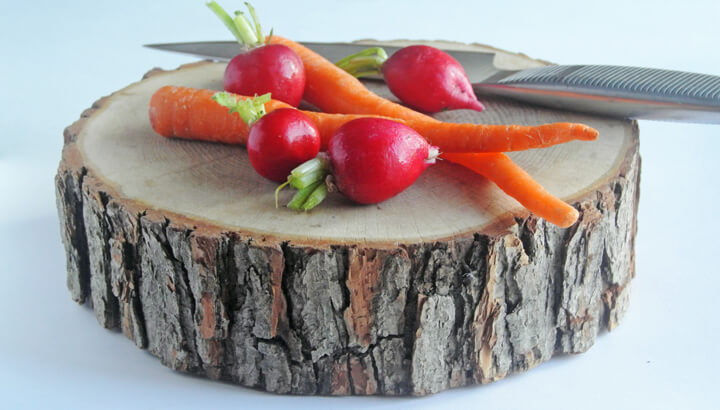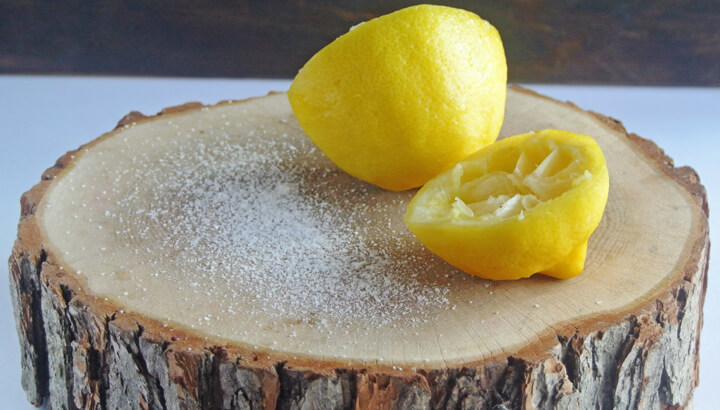
Last
year, I really got into woodworking, which is something I’ve been
exposed to my whole life. My dad is a master craftsman and is able to
build anything under the sun — it’s really quite impressive. With his
help, I began to make functional projects for my house, including a few
cutting boards.
Wooden, rustic
cutting boards are all the hype, however, the concept is far from new. I
have heard of cutting boards being passed down from generation to
generation, based on the quality of the wood and the overall maintenance
of the board itself. If you properly clean and treat a solid piece of
hardwood, it will last several lifetimes.
Say no to soapy board baths

What you may or may not know is that, in many cases, too much soap and water will damage wood. Over time, soapy water will weaken wood fibers, significantly reducing the cutting board’s lifespan. With that being said, you need to clean it after it’s been exposed to food, helping you avoid harmful bacteria.
Which leads me to tip number one — whenever you’re finished with your cutting board, give it a quick rinse with hot water. I generally use hot water and the smallest dab of my homemade organic soap to ensure that the surface is clean.
Tip number two — never submerge your cutting board in water, which will reduce its lifespan and increase the risk of warping and splitting. Secondly, when you place a dirty cutting board in water, wood has a porous surface, and will easily absorb pathogens if submerged. To combat bacteria and stinky (but delicious) ingredients, such as onions and garlic, this hack will always have your back.
Simple and effective, this solution combats the above issues, all while reducing your reliance on chemicals and harsh soaps. Utilizing lemon and salt, this hack will help you naturally clean and deodorize your cutting boards with ease. I use my favorite cutting board every day, so I generally give it a deep clean once a week.
Tip number three — after you clean the board, “condition” all solid wood, such as oak and walnut. This will create a protective layer that helps maintain the look and feel of the board itself. I personally use a vegan, coconut-based oil made with essential oils and a wax made from rice — but there are a number of options available.
Time to scrub up

Besides the two key ingredients mentioned, all you’ll need is a little water, a cloth and some good ol’ fashion elbow grease.
Ingredients
1. Wipe your cutting board, before sprinkling a generous amount of salt over the board itself.
2. With your lemon halves, give the board a good scrub, working the abrasive salt around the entire surface.
3. Using a cloth, wipe away the salt to expose a clean, fresh smelling surface.
Note: Once a month, I will also use a touch of hydrogen peroxide. Pour a small amount on the board, allowing it to fizz for a few minutes before wiping clean. Then simply apply the 2-ingredient hack above to further remove stains and deodorize.
— Krista Hillis

What you may or may not know is that, in many cases, too much soap and water will damage wood. Over time, soapy water will weaken wood fibers, significantly reducing the cutting board’s lifespan. With that being said, you need to clean it after it’s been exposed to food, helping you avoid harmful bacteria.
Which leads me to tip number one — whenever you’re finished with your cutting board, give it a quick rinse with hot water. I generally use hot water and the smallest dab of my homemade organic soap to ensure that the surface is clean.
Tip number two — never submerge your cutting board in water, which will reduce its lifespan and increase the risk of warping and splitting. Secondly, when you place a dirty cutting board in water, wood has a porous surface, and will easily absorb pathogens if submerged. To combat bacteria and stinky (but delicious) ingredients, such as onions and garlic, this hack will always have your back.
Simple and effective, this solution combats the above issues, all while reducing your reliance on chemicals and harsh soaps. Utilizing lemon and salt, this hack will help you naturally clean and deodorize your cutting boards with ease. I use my favorite cutting board every day, so I generally give it a deep clean once a week.
Tip number three — after you clean the board, “condition” all solid wood, such as oak and walnut. This will create a protective layer that helps maintain the look and feel of the board itself. I personally use a vegan, coconut-based oil made with essential oils and a wax made from rice — but there are a number of options available.
Time to scrub up

Besides the two key ingredients mentioned, all you’ll need is a little water, a cloth and some good ol’ fashion elbow grease.
Ingredients
- 1 lemon — which does not need to be fresh. If you often cook with lemons or make vinaigrettes, save the squeezed peels in the fridge to use the following day. This is an excellent way to reuse ingredients, maximizing their potential use.
- Coarse sea salt — I often combine same more finely ground sea salt with some larger, more coarse pieces as well.
- Warm water
- Clean cloth or sponge
- Oil and wax to condition (optional, but highly recommended)
1. Wipe your cutting board, before sprinkling a generous amount of salt over the board itself.
2. With your lemon halves, give the board a good scrub, working the abrasive salt around the entire surface.
3. Using a cloth, wipe away the salt to expose a clean, fresh smelling surface.
Note: Once a month, I will also use a touch of hydrogen peroxide. Pour a small amount on the board, allowing it to fizz for a few minutes before wiping clean. Then simply apply the 2-ingredient hack above to further remove stains and deodorize.
— Krista Hillis
No comments:
Post a Comment